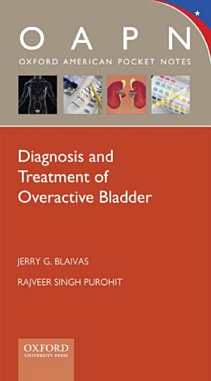Prostatitis and Epididymitis
What Is Prostatitis And Prostatodynia?
There are two kinds of bacterial prostate infections: acute and chronic, but only about 5% of men with symptoms of prostatitis actually have a documented bacterial infection. The remainder have prostatodynia. Prostatodynia is a word similar to urethral syndrome; it conveys the idea that the symptoms are coming from the prostate but, in fact, we don’t know for sure that is the case. More about prostatodynia a little later.
An acute infection of the prostate is characterized by high fever, lower abdominal pain, marked urinary frequency, urgency, muscle aches and pains, pain going down the inner aspect of the thigh, and sometimes urinary retention. The patient looks very ill and the prostate is exquisitely tender on rectal examination. Because it is very difficult for antibiotics to penetrate the prostate and cure the infection, it is important that you take culture specific antibiotics for about six weeks. If the symptoms don’t subside within a few days of starting antibiotics, it is important to be sure that a prostatic abscess is not brewing. At this stage, it can be difficult to be sure on examination, but an abdominal ultrasound or CAT scan can usually make the proper diagnosis. If there is an abscess, it will require surgical drainage.
In chronic bacterial prostatitis, the symptoms are more subtle. The patient’s main complaint is usually frequency of urination, aching in the prostate or testicles and pain of fullness in the lower abdomen. Patients with chronic bacterial prostatitis usually have a history of a bacterial urinary tract infection. The diagnosis is made by doing a special examination of the urine and prostatic secretions known as bacterial localization cultures. This is done by splitting the urine sample into different segments. You begin to urinate and catch the first few drops in a specimen container. Then you continue to urinate and obtain a sample in the middle of urination (a mid-stream sample). You stop urinating and then your doctor examines the prostate with his finger in the rectum. He presses on the prostate with a technique called prostatic massage. This causes some fluid, called expressed prostatic secretions, to leak from the tip of the penis. These secretions are put into another container and, finally, you finish urinating and the last urine specimen is obtained. All of the samples are sent for analysis and culture. If there are pus cells and bacteria in the prostatic secretions, but not in the urine, a diagnosis of chronic bacterial prostatitis is made. Treatment is culture specific antibiotics for 6 weeks.
Prostatodynia is a term which describes the symptoms of bacterial prostatitis, but no bacteria can be recovered from the urine or the prostatic secretions. If you have prostatodynia, it is important to be sure that you are not being misdiagnosed and, in fact have another condition such as a blockage by the prostate, a weak bladder, or damage to the bladder nerves. This requires and extensive evaluation including urodynamic studies.
What Is Epididymitis?
Epididymitis is an inflammation of the epididymis.
What’s an epididymis?
Epididymis, pronounced ep-ee-did-ee-mus, is the coiled up tube that connects the testes with the urethra. The testes make sperm which are stored in the epididymis and transported to the urethra during ejaculation at the time of orgasm during sex. There are two kinds of epididymitis. One is a sexually transmitted disease due to the bacteria C. trachomatis; the other, is caused by the same bacteria that cause cystitis and prostatitis. Both types of epididymitis are thought to be caused by back pressure which forces the bacteria backwards through the epididymis to cause infection. Epididymitis often occurs are sexual activity or after heavy physical exercise, particularly lifting heavy objects or weight lifting. Sometimes, the symptoms might be mistaken for a hernia, and, although heavy lifting can also cause a hernia, they really have nothing to do with one another. On examination, a hernia is felt as a bulge in the lower abdomen or at the upper end of the scrotum. It is usually painless. Epididymitis, on the other hand, is usually excruciatingly painful. Some patients also have symptoms of urinary tract infection, but the tell-tale symptom is severe pain in the testicle, usually on one side. Actually, the pain is coming not from the testicle, but from the epididymis which is behind the testicle on its outer surface. There is usually considerable swelling of the scrotum and often redness and warmth as well. On examination, there is exquisite tenderness over the site of the infection.
Treatment includes bed rest and elevation of the scrotum with an athletic supporter or by simply placing a folded towel beneath the scrotum. Pain relievers are usually necessary and pain may also be helped by application of ice pack on the first day to reduce swelling and heat packs thereafter. Antibiotic treatment is similar to that for either cystitis or urethritis, depending on the cause.
——
Why Choose a Uro Center Urologist in New York?
The urologists at the Uro Center in New York are experts in their field, bringing academic and research based innovation to the clinical forefront. Our urology team specializes in areas of treatment such as: robotic surgery, reconstructive urology, men’s health & infertility, kidney stones, urologic oncology, penile implant surgery, urethral stricture, BPH, Urinary incontinence treatment, Mesh complications, Enlarged prostate treatment, Urodynamics, vesicovaginal fistula and female incontinence in New York.
Request an Appointment











